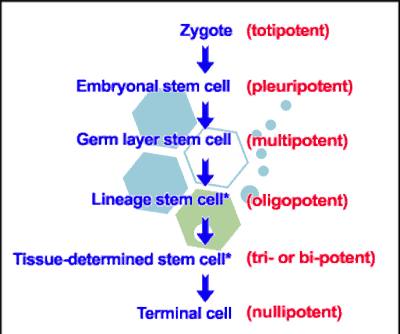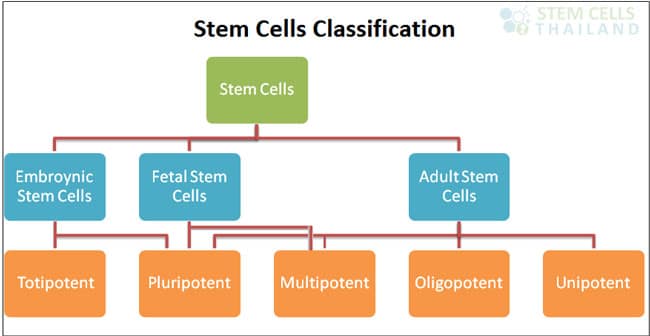Oligopotent cell lines have the ability to transform into quite a limited number of several other types of cells, an example of which is a myeloid cells,B cells, T cells, plasma cells, NK Cells or the cells comprising the lymphoid system. An example of Oligopotent Cells are myeloid cell can differentiate into any of the blood stem cells found in the lymphatic system.

Lymphoid stem cell can become any of the blood cells found in the lymphatic system or vascular (lung stem cells for COPD or IPF), as these only have enough capacity to differentiate into smooth muscle or endothelial cells. [1] Oligopotent cells are known to be less potent compared to multipotent,pluripotent or totipotent cells but in the case of unipotent cells, they are found to be more potent.
Video About Oligopotent Cell Potency
Oligopotent cells are a type of stem cell that has a more restricted differentiation potential compared to pluripotent or multipotent stem cells. While pluripotent stem cells, like embryonic stem cells, can differentiate into almost any cell type in the body, and multipotent stem cells can give rise to a more limited range of cells, oligopotent cells can differentiate into only a few cell types, typically within a specific lineage or family of cells.
Examples of Oligopotent Cells
- Hematopoietic Stem Cells (HSCs): These cells are found in the bone marrow and give rise to all the different types of blood cells. However, within the hematopoietic lineage, there are more restricted progenitors. For instance:Myeloid progenitor cells are oligopotent cells within the hematopoietic system that can differentiate into a few related cell types, including erythrocytes (red blood cells), megakaryocytes (which give rise to platelets), and certain types of white blood cells like neutrophils and macrophages.
- Lymphoid progenitor cells, another subset of HSCs, are oligopotent and can give rise to different types of lymphocytes, including T cells, B cells, and natural killer cells.
- Mammary Stem Cells: Found in the mammary glands, these cells can produce a limited range of cell types related to mammary tissue.
Significance of Oligopotent Cells:
- Tissue Maintenance: Oligopotent cells play a significant role in tissue homeostasis and repair. For example, the continuous turnover and replenishment of blood cells rely on the activity of hematopoietic stem cells and their oligopotent descendants.
- Therapeutic Potential: Understanding and harnessing the potential of oligopotent cells can have therapeutic implications in regenerative medicine and stem cell therapies. For instance, bone marrow stem cell transplantation relies on the ability of HSCs and their descendants to reconstitute the blood system of patients who have undergone treatments that destroy their original bone marrow, like high-dose chemotherapy.
- Stem Cell Research: Studying these cells provides insights into cell differentiation, tissue development, and the factors that govern cellular potential.
While oligopotent cells have a more limited differentiation capacity than pluripotent or multipotent cells, they still play crucial roles in tissue maintenance, regeneration, and potential therapeutic applications.
Published Clinical Citations
[1] ^ Majo, François, Ariane Rochat, Michael Nicolas, Georges Abou Jaoudé, and Yann Barrandon. 2008. Oligopotent stem cells are distributed throughout the mammalian ocular surface. Nature, no. 7219 (October 1). doi:10.1038/nature07406. https://www.ncbi.nlm.nih.gov/pubmed/18830243

